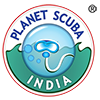In most places a 260 percent increase in tourist arrivals would be a cause for celebration. Not so for Hanifaru Bay.
Located off the uninhabited island of Hanifaru in Baa Atoll, the bay is a small enclosed reef the size of a football field. But what makes Hanifaru Bay unique and attracts tourists is the phenomena that occurs during the south west monsoon from May to November.
Interplay between the lunar tide and the south west monsoon enables build up of a massive concentration of plankton, which in turn attracts hundreds of huge manta rays and gigantic whale sharks. It’s usual to see up to 200 manta rays in a feeding frenzy, accompanied by whale sharks. The bay is one of the two sites in Maldives which acts as a cleaning station as well as feeding site for whale sharks.
Hanifaru Bay was declared a Marine Protected site last year by the government, in recognition of its importance in the ecosystem. When the bay was featured in National Geographic magazine last year, and a BBC Natural World documentary this year, the site’s fame spread all over the world.
Price of fame
“Sometimes we see up to 14 boats crammed into that little space,” says Mohamed Fathuhy, island chief of nearby Dharavandhoo.
He rues the fact that sometimes snorkelers and divers in the bay outnumber the animals.
Regulations announced by the Ministry of Environment on making the bay an MPA say that only five boats can engage in the area at any given time. It also limits the number of swimmers or divers to 80 at any one time.
However Fathuhy says some visitors to try and touch the animals. Safari boats sometimes take money from tourists saying there is a charge for snorkeling in the area. And overcrowding is so bad that crews of visiting safari boats and others had almost come to blows over access.
Ahmed Sameer, general secretary of Youth Association of Kamadhoo, another island nearby, says his co-islanders share the concern: “We are worried that if this goes on, the animals might stop coming and the place might be destroyed.”
Asked why the interest in Hanifaru Bay, Sameer says that Kamadhoo islanders have always been a very eco-conscious people.
“Every household in the island recently signed a pact to not harvest turtle eggs or take turtles, and participate in the turtle conservation project by Four Seasons,” he explains.
Concerned and galvanised into action by the efforts of Seamarc, an environmental consultancy firm, and Four Seasons Landaa Giraavaru, Fathuhy and Sameer is a part of a delegation that visited the Environment Ministry yesterday to share their concern and to suggest co-management of the site.
Cries of a community
The delegation consisted of representatives from the islands of Dhonfanu,Dharavandhoo,Thulhadhoo and Kamadhoo. Province minister Ali Niyaz, Dhonfanu Councillor, Director General of Environmental Protection Agency (EPA) and Mohamed Zuhair, Mari Saleem of SEAMARC, Guy Stevens of Maldives Manta Ray Project and Executive members of Liveaboard Association Shaheena Ali and Fayaz Ismail attended the meeting alongside Minister of Environment Mohamed Aslam and Deputy Minister Mohamed Shareef.
Marie a passionate advocate of co management said “Baa atoll community would like to work with the government to help implement the regulations in place.”
“A cross section of the people in the atoll as well as stakeholders in the tourism industry, support the initiative to develop and manage Hanifaru Bay sustainable.”
The figures in Fathuhy’s presentation was impressive.
“Manta ray tourism generates an estimated US$8.1 million annually,” Fathuhy explained. Hanifaru Bay alone is estimated to generate US$ 500,000 in direct revenue for Maldivian economy this year.
A discussion ensued over wheather Baa Atoll could retain the revenues and the danger of the animals deserting the area if things continued as they were.
Some alterations to the existing regulations were proposed such as penalties for those who don’t adhere to regulations: having a fine for those coming into contact with the animals, and banning speedboats and boats with un-protected outboard engines, as well as implementing a compulsory certification system for guides and boat captains working there, and banning scuba diving in the vicinity.
Way forward
With Minister Aslam admitting that central government had difficulties in managing the MPA as well as other protected dive sites, the question arose over how best to go about it.
The lack of wardens or an effective system of policing the area is an acute problem in Maldives concerning MPA’s.
Hence the group discussed ways of managing the site, government or EPA managing it, going for a business model or a community based one.
The idea of forming a corporative found the most supporters with Aslam saying that “it’s a structured way of doing it as the laws are also already in place.”
Ismail and Shaheena from Liveaboard association were adamant that government had to play a major role in managing the site.
Shaheena pointed out that it would be unfair if any group got ownership of the place. “The process can’t be too democratic.”
“Tourists that hire speedboats from Male and go to that area will be disappointed if they can’t have access to the area.”
The delegation from Baa Atoll went back to their respective communities at the behest of Aslam to draw and propose a practical plan to manage the area.
While Baa Atoll community and the government try and figure out the best way to manage the area, the future of Hanifaru Bay hangs in balance along with its seasonal inhabitants.
